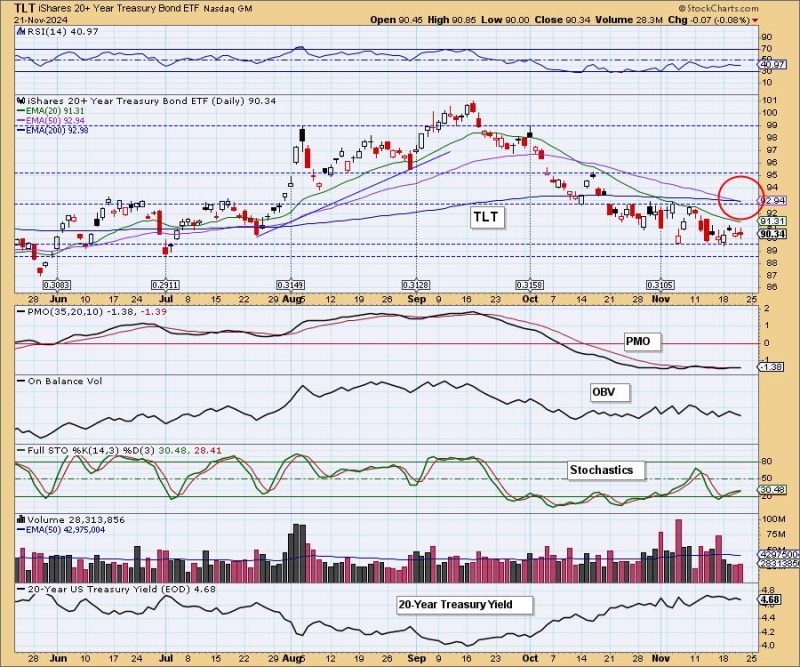Bonds are vitally important financial instruments that facilitate the global flow of capital. They are a form of debt – essentially, an IOU from the government or a corporation to an investor. Recently, however, bonds have received a ‘death cross’ sell signal, and this event could have a significant impact on the bond market, as well as the broader global economy.
A ‘death cross’ is a critical technical indicator in financial markets. It is formed on a price chart when a short-term moving average crosses below a long-term moving average, signaling a potential shift in market dynamics from bullish to bearish. This pattern is considered a bearish or sell signal as it forebodes potential downward price movement.
In the context of bonds, a ‘death cross’ signals an increasing likelihood of falling bond prices, which implies rising yields. The ‘death cross’ in bonds is a warning sign to investors, indicating that it may be a good time to sell or move out of the bond market.
The sell-off in the bond market, as suggested by the ‘death cross’ signal, can play out in different ways. For instance, if investors start selling their bonds, the supply of bonds in the market increases and their price falls, leading to higher yields. This situation becomes a vicious circle because higher yields make bonds more attractive to new investors, but also make existing bonds less valuable.
Higher bond yields also mean higher borrowing costs for governments and corporations, because they have to offer more attractive interest rates to entice investors to buy their debt. Consequently, if borrowing becomes more expensive, economic growth might slow down.
Moreover, rising yields can also make bonds more attractive compared to riskier assets like equities. In such scenarios, investors might start to shift their investments away from the stock market and into the perceived safer haven of bonds. This reallocation of assets could also potentially trigger a sell-off in the stock market.
However, it’s worth noting that a ‘death cross’ is not a guaranteed predictor of market downturns; it is merely an indicator. Many factors influence bond prices and yields, including fiscal and monetary policy decisions, inflation expectations, and changes in market sentiment.
Nonetheless, a ‘death cross’ sell signal in bonds is a serious warning sign that could have substantial implications for the bond market and the broader financial markets. Traders and investors would do well to pay attention to such signals to navigate the changing market climate.
In the end, bonds






























